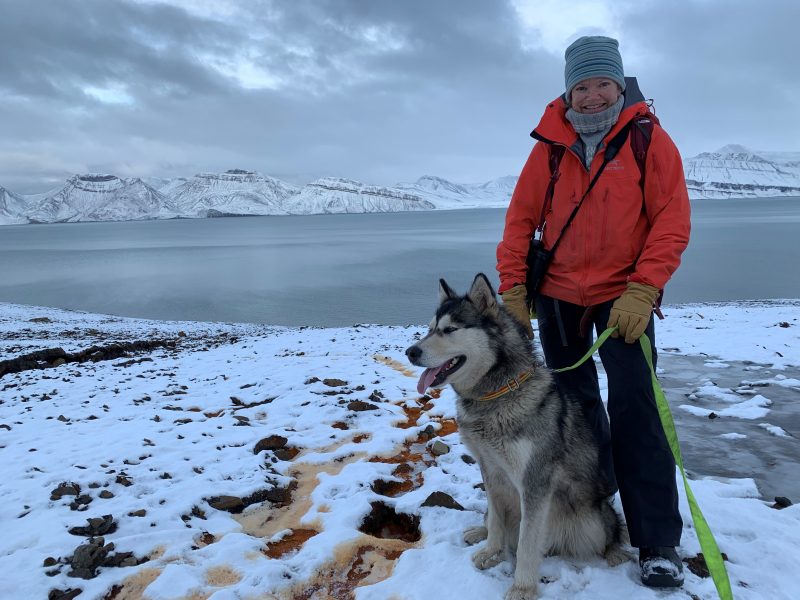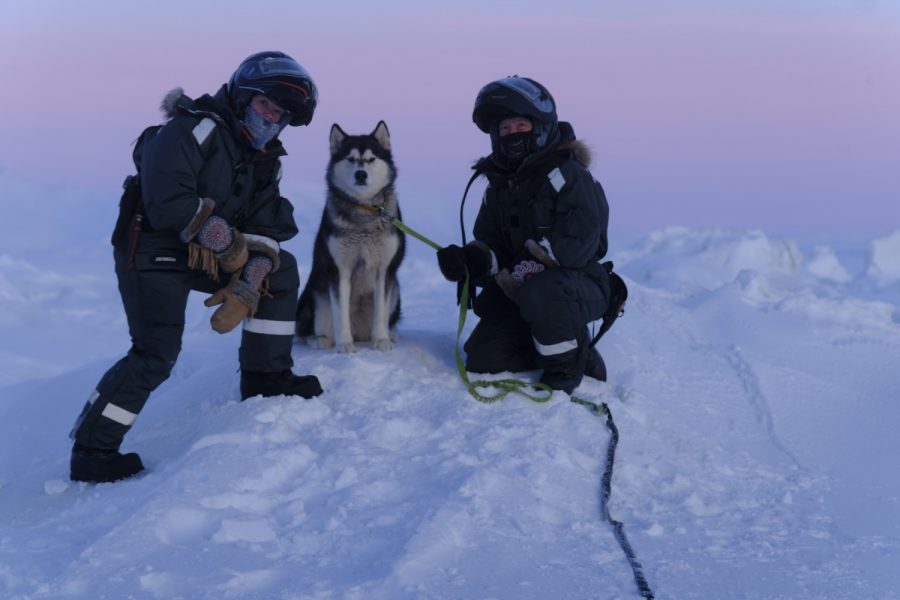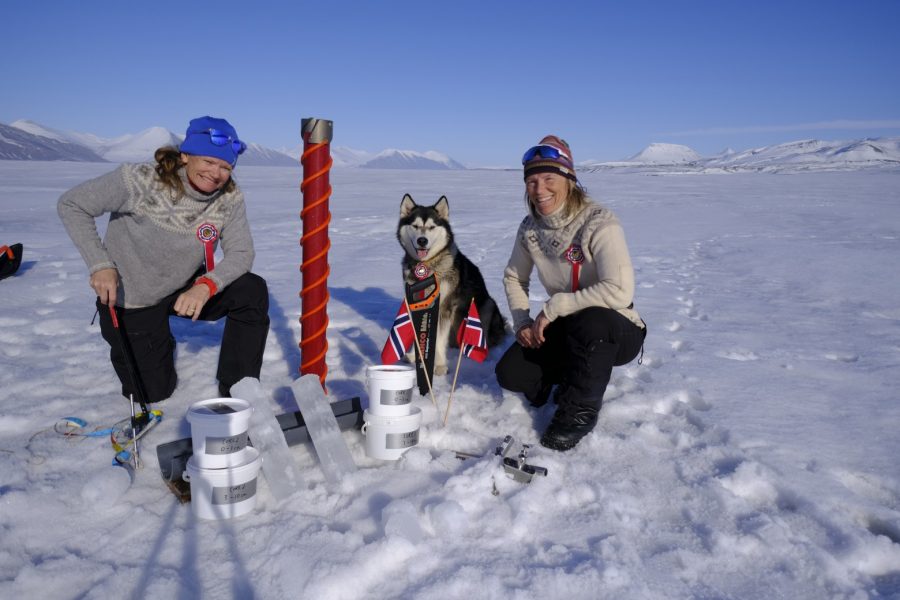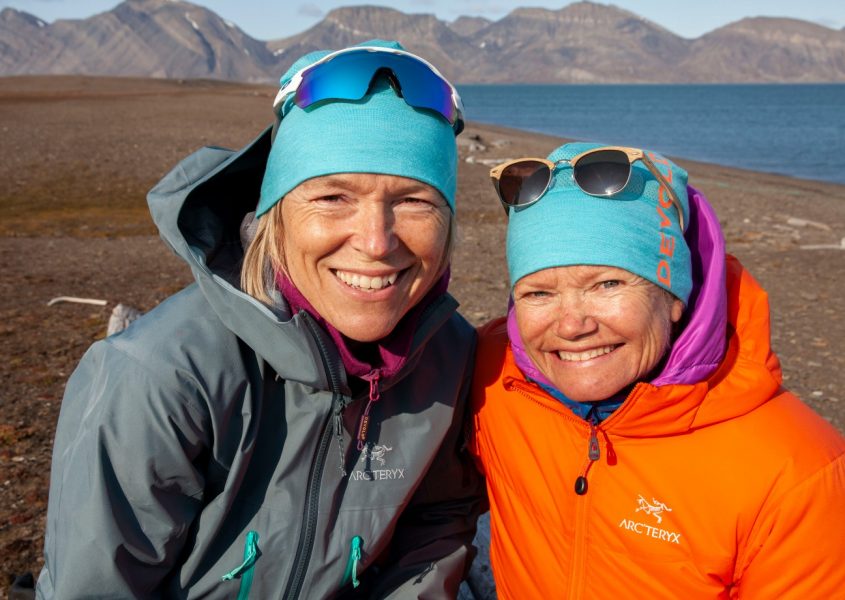Sunniva Sorby and Hilde Fålun Strøm are the first women in history to overwinter in the Arctic without men. From October 2020 to May 2021 they will be isolated at the 78th parallel in the Norwegian Arctic archipelago of Svalbard. Living in a small uninsulated hut called Bamsebu, with no running water or electricity, they will be subjected to one of the harshest climates on earth, surrounded by polar bears and total darkness.
Hearts In The Ice: Two Women Overwintering In Svalbard

How can you, or even can you, prepare for something like this?
Rather than a need for preparation, one needs a profound pull or calling for this. The idea for Hearts In The Ice started in 2017 after Hilde and I met at an Adventure Travel Trade Association event in Alaska. I was perfectly happy in my position as Head of Global Sales for a Polar travel company, so the thought of uprooting my life was daunting and inconvenient, but by the time I had embraced leaving my job, home and hearth to overwinter in the frozen north I felt perfectly suited for the expedition.
Until you truly commit yourself to something, you can never really know its meaning; for me, it was a decision to live with purpose, on purpose.
“Until you commit yourself to something, you never know its meaning; for me, it was a decision to live with one purpose.”

My entire life’s work and experiences have prepared me for this. To be here is to be tested in all ways; mentally, physically and spiritually. It is so isolating, harsh and remote, you have to exercise patience, a sense of calm during incessant storms, be rigorous with daily routine, take care of yourself in extreme cold, handle weapons and safety gear, and be a master problem solver. Did I mention packing a sense of humour? That’s essential.

Paint a picture for us, what is 24 hours like in this environment?
It’s surreal, dark, cold, peaceful, ever-changing and full of surprises, with Polar bear visits and the Aurora lighting up the sky. Bamsebu, our home, is a 20 sqm² hut built in 1930 by beluga whale hunters. It’s rudimentary but provides welcome shelter from the cold. With no insulation, running water or electricity, each day involves chopping wood, collecting ice for fresh water and ensuring equipment is secure from gusting wind.
Keeping the hut warm takes hours, so mornings are spent under covers reading and writing. We do physical training and yoga six days a week and work daily on laptops responding to emails and creating content for citizen science projects. We’re finishing the edits for our book, out in March.
At twilight, we layer up and walk to the “spit”. The low light helps us feel safer as Polar bear tracks are visible. We count and record wildlife, collect plastic and kelp from the beach, and obtain bear poo samples. Our days comprise an oatmeal breakfast, a small lunch and dinner shared over candlelight. It’s important to celebrate small everyday joys and acknowledge each other’s efforts – kind words and a smile go a long way in this isolated world.
“It’s surreal, dark, cold and full of surprises, with Polar bear visits and the Aurora lighting up the sky.”

Can you tell us about the 7 Citizen Science projects? What impact are you hoping they will have?
Svalbard has been investigated for the effects of climate change by numerous projects. Hearts In The Ice provides year-round observations, strengthening scientists’ ability to evaluate the region’s climate.
We work with the British Columbia Institute of Technology capturing colour and thermal imagery, recording air temperatures and taking aerial photos of glacial deposits. Using drones to collect environmental data is relatively new, and rarer in High Arctic latitudes.
We also assist the Scripps Institution of Oceanography by observing phytoplankton. We use a Secchi disk to measure water depth and transparency, and a plankton net and castaway device to measure temperature and chlorophyll. Citizen science collaborations like ours help scientists learn about these dynamics within a timescale one scientist alone couldn’t manage.
Another core project is supporting NASA by providing Aurora borealis observations. Our remote location, away from light pollution at a high latitude, enables us to observe the Northern Lights over a long period. This gives scientists a better understanding of the structure of Aurora Borealis and the conditions in which they occur.
Day to day, we collect micro-plastics, obtain Polar bear poo samples, source ice core samples and record our wonderfully varied wildlife encounters; Arctic fox, beluga whales, reindeer, Polar bears, seals, walrus and ptarmigan.
“We provide year-round observations, strengthening scientists’ ability to evaluate the region’s climate.”

What does overwintering in the Arctic mean to you personally?
Svalbard’s long history of over-wintering has been male-dominated despite women playing major roles. It was time to rewrite history, break with tradition and show that we’re strong, resourceful and successful without men. The transition to the long ‘Polar Night’ is one of the greatest seasonal events on Earth. Polar bears go into hibernation with their young, Arctic foxes change colour, ptarmigan lose their spots and everything freezes.
“It was time to rewrite history and show that we’re strong, resourceful and successful without men.”

To witness time standing still in the Arctic is a deeply meaningful experience; leave behind your conscious mind, regain your senses and comprehend that the wild is beyond taming. You cleanse the unresolved parts of your soul and stand in immense stillness and beauty, surviving and thriving through winter depending only on essentials.
This is an exciting time to celebrate our experience, leadership abilities and concern for nature, contributing to history as Polar pioneers and ambassadors. As the world spins off its axis, Covid-19 has slowed movement around the globe, but climate change doesn’t take a break so neither are we. We’ve been at Bamsebu for 14 months and spent 10,000 hours together. Everything revolves around simply existing with pure and complete freedom.